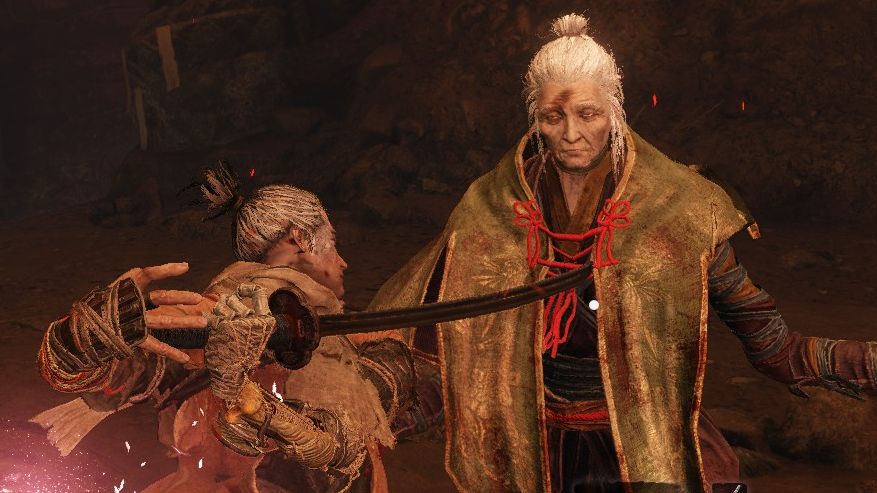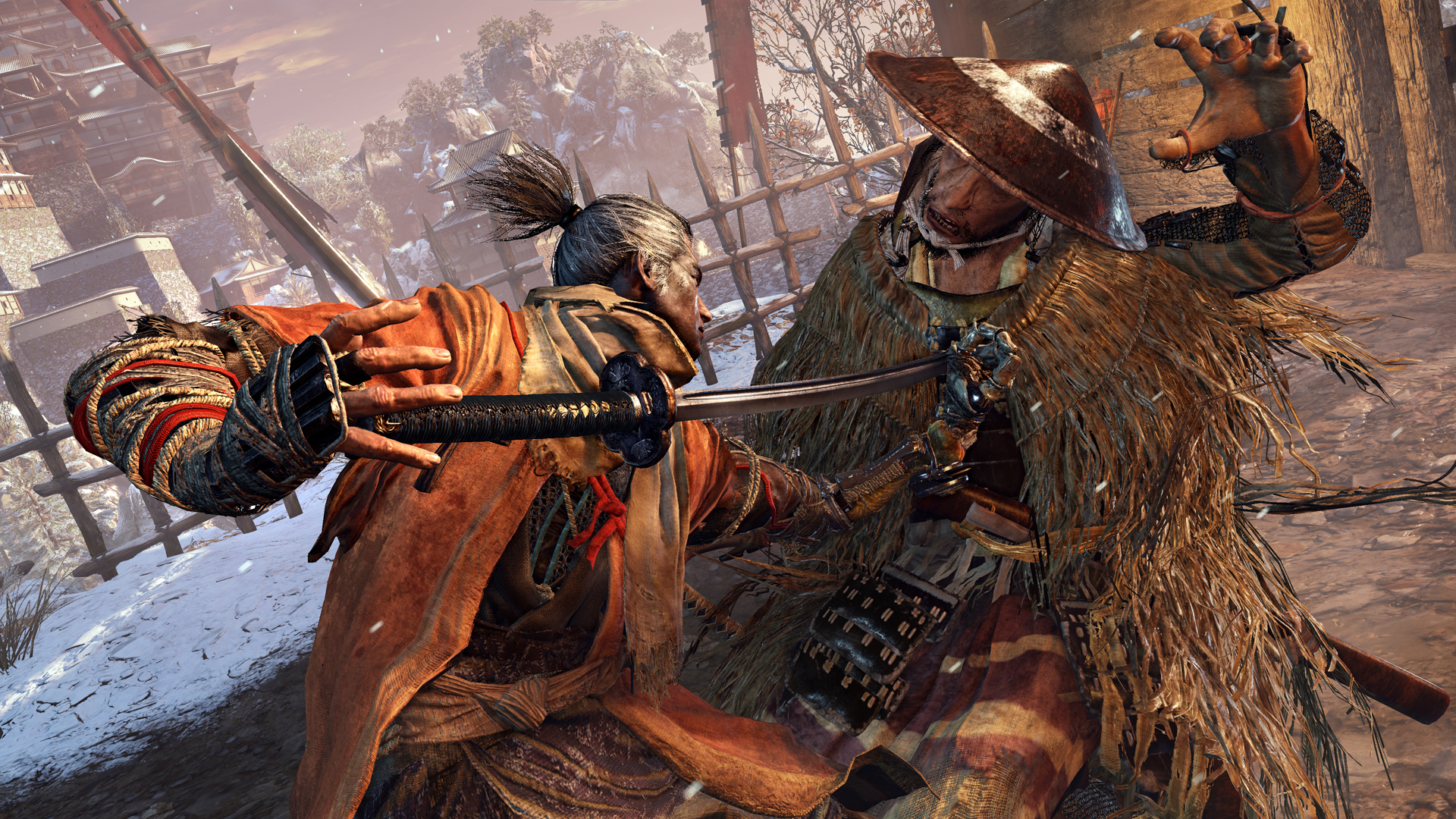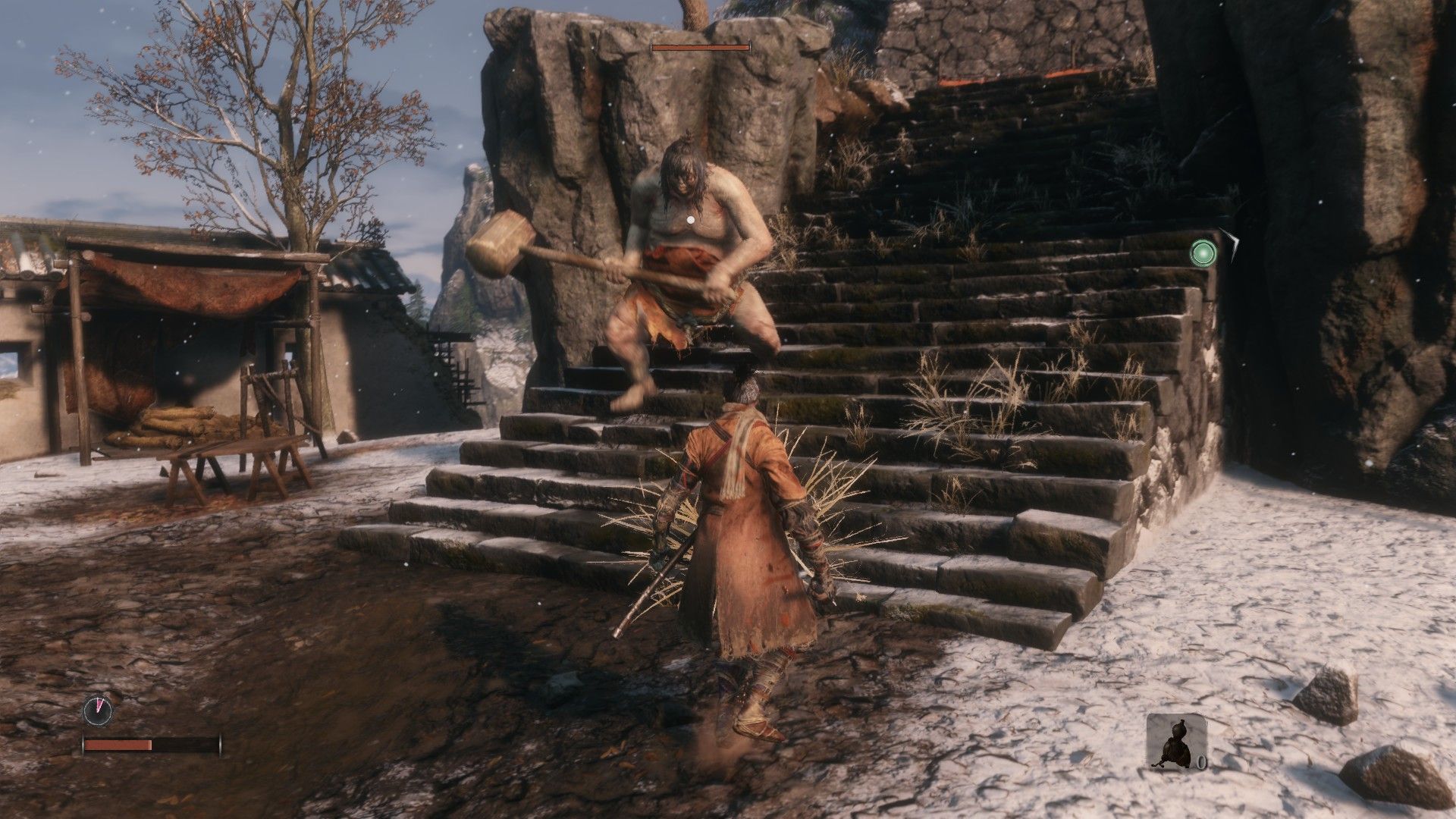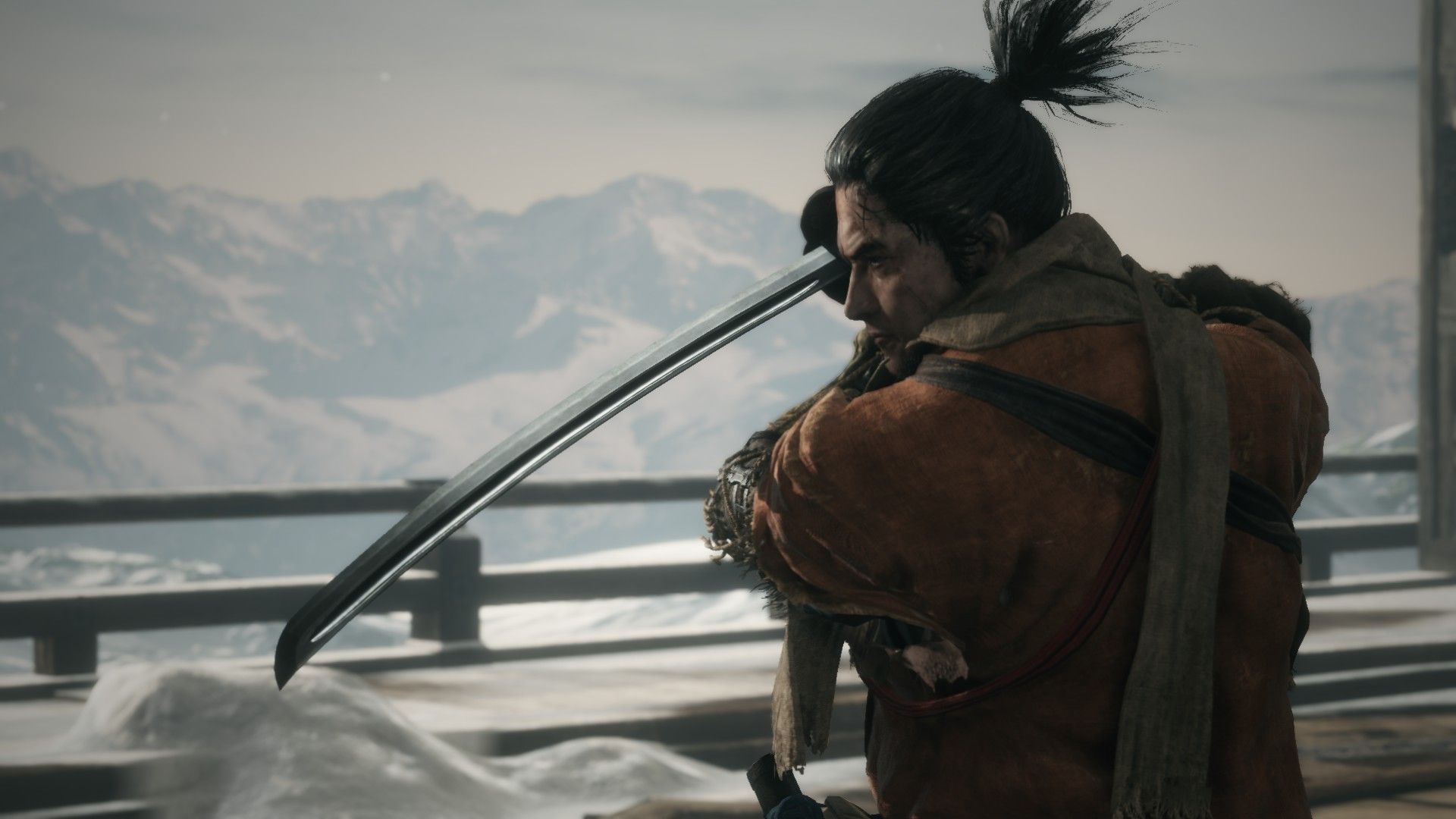Is Sekiro too hard?
We talk about how Sekiro succeeds and stumbles with its approach to punishment.

We play games for different reasons, whether to watch numbers fly off of demons with friends in Diablo 3 or to give up our career, friends, and family to study the blade in Sekiro. Games can be simple toys we fiddle with to pass the time or tests of patience and persistence that make us feel capable of anything.
We don’t blame anyone for thinking Sekiro is too difficult for them. But with all the talk about Sekiro’s difficulty, we’ve been thinking about what good difficulty means—how you’re punished and whether that punishment suits the task—and how Sekiro succeeds or fails in this regard.
Is it fair? Is it actually fun to throw yet another corpse on the pile? Let’s talk it out.
First impressions
James: Let’s open with the big question. Tom, you’ve finished the damn thing, so your perspective will be the most valuable here. Steven, you and I are still somewhere in the sprawling mid-game. We’ve experienced plenty of whiplash in coming to understand Sekiro, but is it too hard? Quick answers, then we’ll dive into the specifics. Our real answers will be much more complex, but let’s see those quick takes.
For me? No. It’s challenging, especially in the first few hours, and there are some questionably designed arenas, but so far Sekiro hasn’t made me want to throw my controller. It has made me want to try out Gamer Goo, even if it burns my skin off. My hands are dripping after some of Sekiro’s fights.
Steven: I definitely felt like Sekiro was too hard at first, before I intuitively understood how its subtle changes to combat actually have massive implications on how I fight. This is especially grating because, early on, you have so few resources to help in a fight. With only one charge of my estus—sorry I mean healing gourd—to start, those early combat encounters felt punishing in a way that I don't ever recall Dark Souls or even Bloodbourne being. But maybe my memory is just faulty?
Either way, I really was frustrated by Sekiro in the beginning, to the point where I openly questioned whether I even liked the game. What did you think, Tom?
The biggest gaming news, reviews and hardware deals
Keep up to date with the most important stories and the best deals, as picked by the PC Gamer team.

Tom: Difficulty isn’t just about the number of times you die, but the progress that you lose with each death, and the amount of your human meat life that gets eaten up repeating areas. On these counts, Sekiro is a fairer and less draining game than the Dark Souls series and Bloodborne, and generally far more accessible to new players.
I had fewer of those moments when I yelled ‘bullshit!’ at the monitor because Sekiro’s combat system is so consistent.
James: I will say that I’m not a fan of the big arenas spilling over with enemies orbiting a miniboss. Boss time and mob time are two distinct playstyles in Sekiro, and they rarely mix well. Taking out the little guys is easy. I can do that. Don’t make me show you again, Sekiro, please. Just let me fight the drunkard.
Steven: I'm with you, James. As much as I love Sekiro, I think that there's definitely some issues with its encounter design, especially early on. There's a few mini bosses in the Hirata Estates level that are surrounded by lesser enemies, and you'd have to be a god-tier veteran to take on the whole lot in open combat. It's maddening.
These encounters usually demand that I spend a good five minutes slowly picking off these underlings (often by cheesing the stealth system, killing one openly and then running away, waiting for them to drop aggro, and repeating the process) before being able to attempt the boss. Because it's still early in the game and I suck, I usually die pretty quickly, requiring me to repeat that whole process from the beginning. It's really hard to learn a boss when you only get 10 seconds of practice, die, and then have to endure five minutes of annoying stealth. It's less an exercise in skill and more a trial of patience.
Fortunately, these poorly designed fights seem to not be all that common. But because they appear near the early sections of the game, it was easy to conflate these with Sekiro being, overall, far too difficult—which I just don't think is true anymore.

When combat clicks
Tom: The combat can still be brutal—you can rarely take more than two or three hits—but anyone can learn Sekiro’s parry system and become proficient with time, and I think this game does a better job of giving you all the tools you need up front. There aren’t invisible mechanics determining how fast you move based on your armour. There aren’t secret tiers of roll you get depending on what you wear. There’s no stamina bar to manage and upgrade with souls. There are no bullshit collapsing floor boss fights (curse you, Witch of Izalith). You’re a ninja: you can slash, parry, jump, and grapple—techniques that are simple to grasp.
I had fewer of those moments when I yelled ‘bullshit!’ at the monitor because Sekiro’s combat system is so consistent. There are a few hard teaching points—you’re supposed to just deflect some enemies to death, for example—but for the most part this is a game about skilling up through practice.
The difficulty we’re talking about is just the difficulty in understanding what the hell Sekiro is.
James: Yeah, I’m with you so far, Tom. Sekiro’s thesis is practice, patience, and mastery. The Souls games are more aimed at survival by any means necessary, dragging yourself across the finish line even if it takes dozens of hours of grinding or calling out for help (humility is key in Souls, too). How you get there is up to you.
In Sekiro, you can fill out your arsenal and juice your health up to allow for a mistake here and there, but everyone needs to take the same path to success. Parry, dodge, jump, grapple, and strike. That’s about it. It’s more prescriptive, sure, but this isn’t a game about carving out a playstyle. Adapting to the design rather than trying to force it to fit your habits is what most people are having trouble with early on.
Steven: I really like that difference, though. Not that Dark Souls or Bloodborne isn't great, but there's a special kind of satisfaction in having to conform to one playstyle instead of finding your own niche and abusing the hell out of it (I am a pyromancy pansy in Dark Souls).
James: Oh, I like it too, it’s just players are coming into Sekiro with five previous Souls games under their belt, along with all their accompanying habits. I don’t blame anyone for trying to play Sekiro like a Souls game as it has plenty of the same motifs: bonfire-y checkpoints, lock-on combat, labyrinthine level design, and so on. It’s been amazing to see everyone have their own epiphany where they just say fuck it and get aggressive only to realize that’s how Sekiro is meant to be played. Steven, you captured exactly what I felt in your piece on the spear dude, who seems to be everyone’s favorite teacher.
In a Souls game, instead of learning the game’s core skills, you can plough hours into repeating areas to grow your damage output and brute-force boss encounters.
The difficulty we’re talking about is just the difficulty in understanding what the hell Sekiro is. There’s nothing that plays quite like it. Halo was hard as hell before I knew what it was, too. And to be fair, even once you get it, Sekiro is still very challenging, but it stops feeling hopeless. Like, how wild is it that after we realized aggression is key we both, in a string of real time Slack messages, encouraged each other to try and successfully beat Lady Butterfly and Genichiro with relative ease? It didn’t hurt that I’d put together a few prayer bead necklaces and found some more gourd seeds, but they didn’t guarantee my success.
Tom: Sekiro’s structure and economy soften the difficulty of combat a bit. Sekiro’s economy lets you broaden your options with new prosthetic upgrades and combat moves; the souls and blood echoes you collect in other Soulsborne games allow you to directly increase your power. In a Souls game, instead of learning the game’s core skills, you can plough hours into repeating areas to grow your damage output and brute-force boss encounters.
Some people enjoy that, but I think it’s a far more grueling and unpleasant way to drag out time (though such a feeling works very well thematically in the darker universe of Souls and Bloodborne—both horror games in their own way). In Sekiro you lose half your money and some skill XP when you die, which is no big deal really, and the run-backs from idols to bosses are much quicker thanks to the level design and the addition of stealth and a grappling hook that let you skip encounters.
And all of that is why Sekiro: Shadows Die Twice is easy-peasy. What’s the problem, guys?
James: I’m coasting now, though I’ve yet to meet a certain ape. I’m prepared to eat my words and go through this emotional roller coaster all over again. But this time I'll know the payoff is worth it.
James is stuck in an endless loop, playing the Dark Souls games on repeat until Elden Ring and Silksong set him free. He's a truffle pig for indie horror and weird FPS games too, seeking out games that actively hurt to play. Otherwise he's wandering Austin, identifying mushrooms and doodling grackles.



